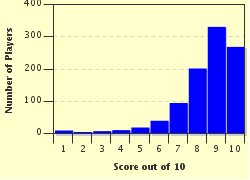
Fractured Colours Trivia Quiz
Here are ten fractured colours for your viewing pleasure. Have fun! Note: An Australian accent was used in the making of these words, so try a slow drawl if you get stuck.
A multiple-choice quiz
by Creedy.
Estimated time: 4 mins.
